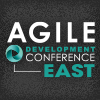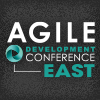 |
Scaling Agile at Dell: Real-life Problems - and Solutions
Slideshow
The transition from waterfall-based software development to an agile, iterative model carries with it well-known challenges and problems-entrenched cultures, skill gaps, and organizational change management. For a large, globally distributed software development organization, an entirely different set of practical challenges comes with scaling agile practices. Last year the Dell Enterprise Solutions Group applied agile practices to more than forty projects ranging from a collocated single team project to projects that consisted of fifteen Scrum teams located across the US and India. Geoff Meyer and Brian Plunkett explain how Dell mined these real-life projects for their empirical value and adapted their agile practices into a flexible planning model that addresses the project complexities of staffing, scale, interdependency, and waterfall intersection.
|
Geoffrey Meyer, Dell Inc. l Enterprise Product Group
|
 |
Protection Poker: An Agile Security Game
Slideshow
Each time a new feature is added to a product, developers need to consider the security risk implications, find ways to securely implement the function, and develop tests to confirm that the risk is gone or significantly lowered. Laurie Williams shares a Wideband Delphi practice called Protection Poker she's employed as a collaborative, interactive, and informal agile structure for "misuse case" development and threat modeling. Laurie shares the case study results of a software development team at RedHat that used Protection Poker to identify security risks, find ways to mitigate those risks, and increase security knowledge throughout the team. In this session, Laurie leads an interactive Protection Poker exercise in which you and other participants analyze the security risk of sample new features and learn to collaboratively think like an attacker.
|
Laurie Williams, North Carolina State University
|

